St Gerard’s Church and Monastery

Image: WCC - Charles Collins, 2015
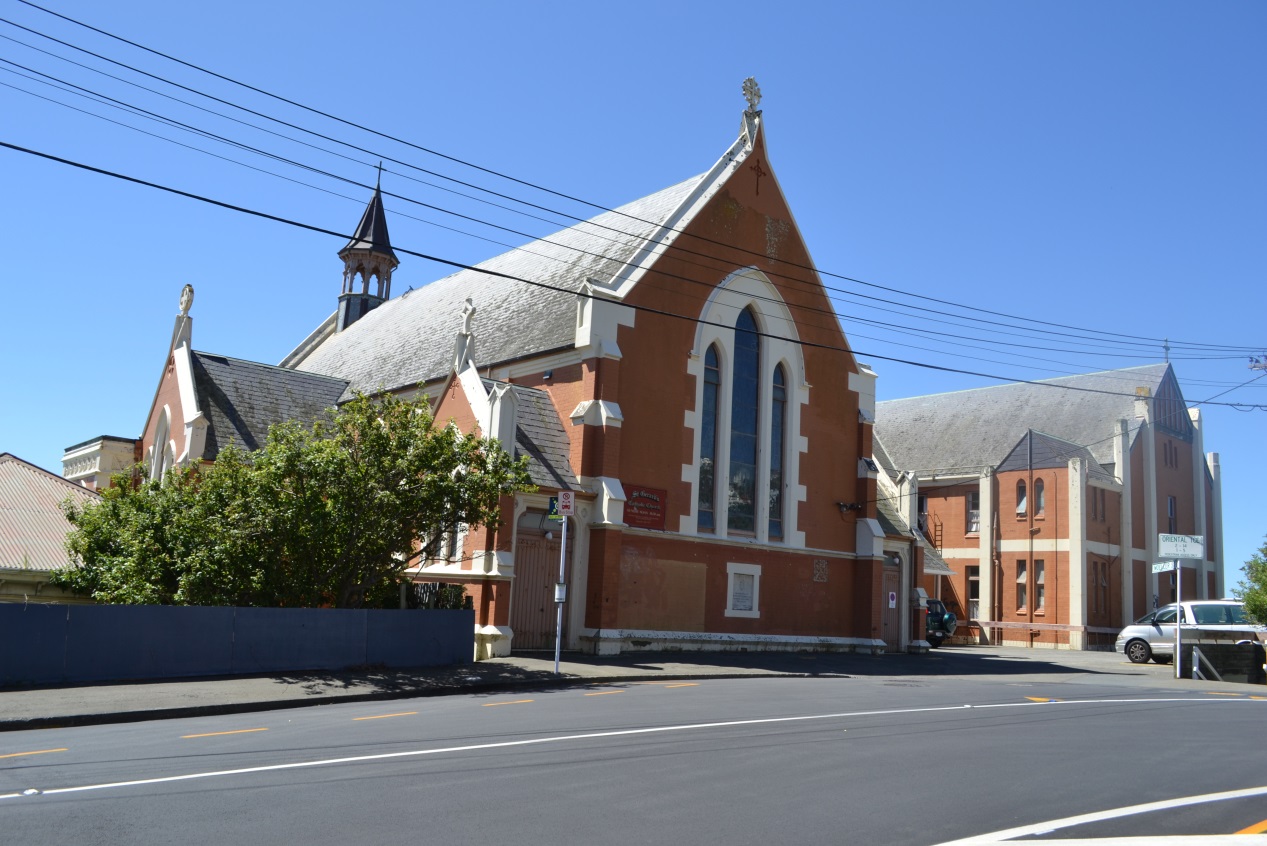
Image: WCC - Charles Collins, 2015
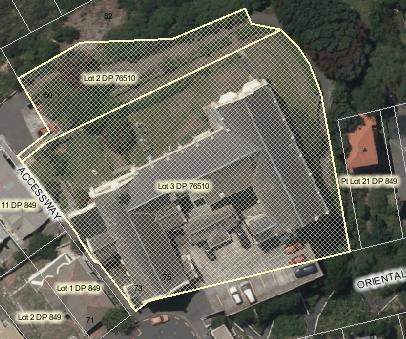
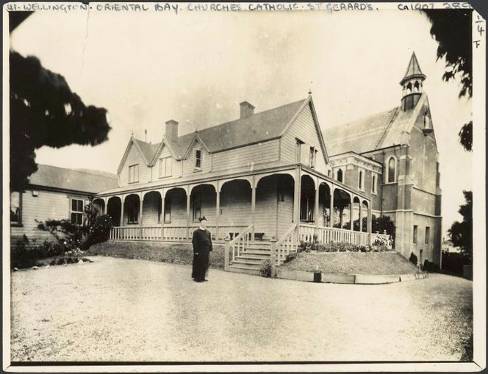
Naional Library reference: St Gerard's Church and Monastery, Oriental Bay, Wellington, and Father Clunie. Oakes, Francis Joseph: Scenes at St Gerard's Church and Monastery, Hawker Street, Oriental Bay, Wellington. Ref: PAColl-6477-01. Alexander Turnbull Library, Wellington, New Zealand.
http://natlib.govt.nz/records/22735909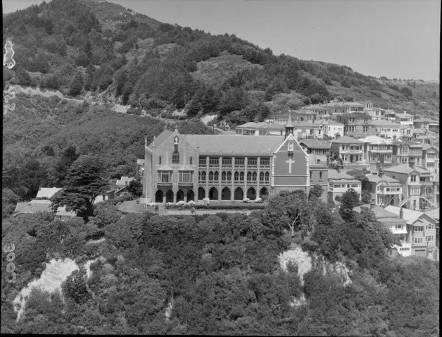
National Library reference: St Gerard's Monastery, Mount Victoria, Wellington. Negatives of the Evening Post newspaper. Ref: EP/1955/3002-F. Alexander Turnbull Library, Wellington, New Zealand. http://natlib.govt.nz/records/22339310
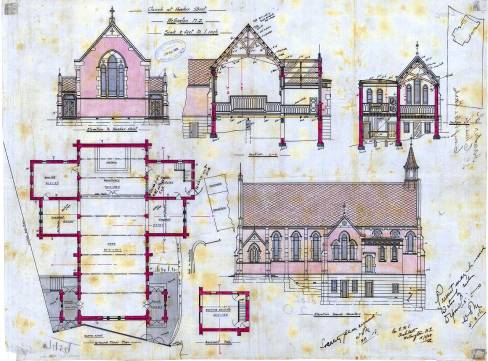
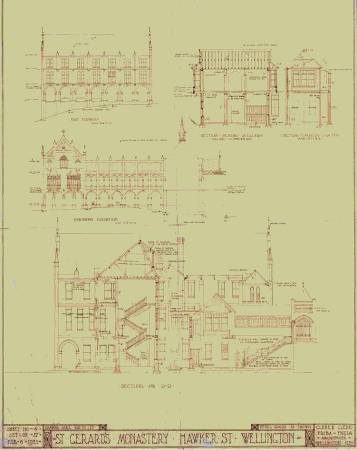
-
Constructed
1908 - 1932
-
-
Architect(s)
-
Builder(s)
Unknown
-
This building is a significant example of the Gothic revival style of architecture in New Zealand. Its style, scale, materials, quality, and craftsmanship all give St Gerard’s architectural value. It is also a representative example of two of Wellington and New Zealand’s most prominent architects, John Swan and Frederick de Jersey Clere.
This building is associated with the Redemptorist faith, and the Church is the first in the world to be dedicated to Italian saint Gerard Majella.
This building has substantial townscape value for the part it plays in defining the Mt Victoria and Oriental bay areas. It is situated on a prominent cliff top and as such provides a visual land mark for the city.
-
Downloadable(s)
-
close
History
-
St Gerard’s Church and Monastery is one of Wellington’s most significant and distinctive landmarks, sited on the cliffs above Oriental Bay. St Gerard’s is made up of two parts, the Church built in 1908 and the Monastery built in 1932. The buildings are the combined effort of two of Wellingtons most well known architects, John Swan and Frederick de Jersey Clere, and although having been built just over two decades apart the balanced form and Gothic revival detailing hold together a powerful architectural composition.
The site on Hawker Street has a long history of occupation, having been purchased by James Edward Fitzgerald as part of a parcel of land. Fitzgerald also had built a large, two storey wooden house there in 1871 which became known as ‘Fitzgerald’s Folly’. After his death, his children divided up the land and sold part to the Redemptorist fathers. The fathers used this building as their New Zealand headquarters and in 1906 their congregation had grown so much that a new building was needed. The order approached John Swan to design a church to sit beside ‘Fitzgerald’s Folly’
After having one design declined in 1906 due to budget constraints a 1908 design was chosen. The tender was won by contractors Campbell and Burke at a cost of £4,998 and 10s. On the 26 April of 1908 construction began. The church was constructed in un-reinforced brick masonry and plastered internally. The altar was designed by Swan, and built by Hickmott and son of Wellington of white Carrara Marble, red Devonshire marble, and green Galway marble. The sacristy furniture and two Kauri altars for the side chapels were built by Brother Lawrence Watters. The Church is the first in the world to be dedicated to the Italian saint Gerard Majella, and was erected for the Redemptorists, an order that dedicated itself to reviving the spiritual lives of Catholic parishioners. After the installation of the pipe organ in 1910 the congregation began to grow and the Church’s choir, widely regarded as one of the best in the country, was regularly featured on National radio’s Sunday service.
By 1932 the parish had grown so much that a monastery was needed to house the growing needs of the brothers. The building was designed by Frederick de Jersey Clere and kept with the design of Swan’s earlier church. As a consequence of this harmony many attribute the entire design to Clere. The designs for the monastery are dated 1931 and tenders were called in May of that year, and that submitted by J.L. McMillan for just under £22,000 was accepted. The Redemptorists vacated ‘Fitzgerald’s Folly’ and demolition commenced. The monastery was completed in 1932 and the brothers moved in. From this time it has been called St Gerard’s Monastery although it is not one in the true sense as the Redemptorists are not monks.
Broadcasts of the St Gerard’s devotions continued through the 1920s and 1930s and the Church was a source of comfort and hospitality throughout the Depression and World War Two. St Gerard’s became a centre for civil defence during the Second World War due to its landmark qualities and the building was sandbagged to protect it from fire as authorities believed that its destruction would be damaging to morale. In 1944 concrete steps and retaining walls were erected in an effort to improve the grounds.
The 1960s saw a number of changes, particularly related to those associated with Vatican II. Alterations were made to the sanctuary of St Gerard’s to bring it in line with the liturgical practices outlined by Vatican II. Plans were made to build a car park at the Hawker Street entrance of the Monastery which would be designed so that a squash court and social centre could be built underneath this platform. In 1982 fundraising was carried out by the Wellington community for the purpose of waterproofing the exterior of the building, the campaign reached a $100,000 goal. At this time the bell from the tower was also removed, partially for structural reasons and partly as a gesture of goodwill towards members of the Mt Victoria community who did not enjoy the 7am wake up. By the late 1980s it had become apparent that the premises were too large and too expensive for the Redemptorists to continue occupying and the decision was made to sell St Gerard’s. TheInstitute for World Evangelisation – ICPE Mission (New Zealand Branch) (ICPE) had used the monastery in 1988/89 for a training programme and was interested in purchasing the site, conditionally doing so in 1990. It is still owned by the ICPE and is used as a mission centre.
In 2012/2013 the Church and Monastery were identified as being earthquake prone. Subsequently there have been a number of options promoted for strengthening or demolishing the building. These options have led to public outcry in the print and general media. It has been estimated that the buildings will need up to $10 Million to strengthen the Church and Monastery. The outcome of this is yet to be clarified.
-
Modifications
close
-
1908
-
Building construction-Church (00053:143:7959)
-
1909
-
Stained glass window installed
-
1910
-
Pipe organ installed
-
1931 - 1932
-
Building construction – Monastery (00056:121:B10979)
-
1953
-
Addition-Steps and retaining wall (00056:457:B34738)
-
1961
-
Church alterations (00058:178:C8216)
-
1969
-
Addition-3 Garages (00058:629:C29243)
-
1970 - 1971
-
New car parking platform built at entrance of monastery (00058:718:C32614)
-
1982 - 1983
-
Waterproofing carried out on exterior of the Church and Monastery-financed partially through public appeal. Strengthening work carried out to roof diaphragms of the Church
-
1976
-
Upgrade of fire escapes and addition of smoke partitions (00058:1064:C46215)
-
1983
-
Alteration-structural roof bracing (00058:0:C61757)
-
1984 - 1985
-
Strengthening work carried out on the floor diaphragm of the Church (00058:0:C67600)
-
1991
-
Refurbishment of St Gerard’s Monastery (00059:518:E24411)
-
1997
-
Seismic work for existing buildings (00078:663:26979)
-
2007
-
Additions-installation of new bathroom and kitchen including new wall between existing tailors room on first floor (00078:2613:163765)
-
-
Occupation History
close
-
1908 - 1990
-
Redemptorist Church
-
1990
-
present International Catholic Programme of Evangelisation
-
-
-
close
Architectural Information
-
Building Classification(s)
close
Not assessed
-
Architecture
close
St Gerard’s is made up of two main parts, the church built in 1908 and the monastery built in 1931-32. They have been structurally integrated to form one cohesive building although the materials used in each construction are different. The architectural style of the building was set by Swan’s use of Gothic forms in the construction of the church. The high west-facing gable of the Church was reproduced by Clere in the design of the Monastery giving a balanced composition. Gothic forms are evident in the design, with pointed arched openings, lancet windows, pinnacles, stepped buttresses, steep pitched roofs and bell turret. These features all contribute to a strong vertical composition.
The interior of the Monastery is simple, with plain profiles to finishing timbers, and decoration is limited to some leaded windows with coloured glass, and carved tops to the main staircase newel posts. All of the windows in the Church are stained glass made in Birmingham by John Hardman & Co. The were financed by Wellington and Hawkes Bay families and donated to the Redemptorists and installed in the Church in 1909.
Relatively few changes have been made to the fabric of the building, the most significant being the construction of an open car park deck in the front of the building. This resulted in the demolition of the original entrance and cloister, an intricate composition of brickwork forms that the building is poorer for losing. Inside several fire-stop doors have been added. Inside the church altar rails and other liturgical items have been removed but the form and fabric is unaltered.
-
Materials
close
Church
The church is a one storey, unreinforced brick masonry building in cavity construction. The roof structure comprises eight heavy king-post trusses spanning across the nave. The roof sarking is diagonal tongue and groove boarding and the sheathing is slates. The floor is timber.
Monastery
The monastery is cast in-situ reinforced concrete with a plaster finish. The floors are concrete with structural steel beams encased in concrete in a number of locations. The cladding is brick veneer to the external walls and Welsh Countess slates to the roof on heavy timber framing.
-
Setting
close
St Gerard’s acts as an important landmark and defines the Mt Victoria and Oriental Bay area. St Gerard’s is situated on a prominent cliff top and as such provides a visual land mark for the city. It contributes considerably to the character of Wellington when viewed from the city, and particularly when viewed as a part of a view shaft with the Victoria University Hunter building, sited on an opposite hill.
-
Building Classification(s)
close
-
close
Cultural Value
This building is a significant example of the Gothic revival style of architecture in New Zealand. Its style, scale, materials, quality, and craftsmanship all give St Gerard’s architectural value. It is also a representative example of two of Wellington and New Zealand’s most prominent architects, John Swan and Frederick de Jersey Clere.
This building is associated with the Redemptorist faith, and the Church is the first in the world to be dedicated to Italian saint Gerard Majella.
This building has substantial townscape value for the part it plays in defining the Mt Victoria and Oriental bay areas. It is situated on a prominent cliff top and as such provides a visual land mark for the city.
-
Aesthetic Value
close
-
Architectural
Does the item have architectural or artistic value for characteristics that may include its design, style, era, form, scale, materials, colour, texture, patina of age, quality of space, craftsmanship, smells, and sounds?
This building has value as a significant example of the Gothic revival style of architecture in New Zealand. Its style, scale, materials, quality, and craftsmanship all give St Gerard’s architectural value. As a whole it is also a representative example of two of Wellington and New Zealand’s most prominent architects, John Swan and Frederick de Jersey Clere.
-
Group
Is the item part of a group of buildings, structures, or sites that taken together have coherence because of their age, history, style, scale, materials, or use?
St Gerard’s is made up of two buildings – the Church and the Monastery, which relate to each other as a set. They are coherent in history, use, scale, and materials.
-
Townscape
Does the item have townscape value for the part it plays in defining a space or street; providing visual interest; its role as a landmark; or the contribution it makes to the character and sense of place of Wellington?
This building has substantial townscape value for the part it plays in defining the Mt Victoria and Oriental bay areas. It is situated on a prominent cliff top and as such provides a visual land mark for the city. It contributes considerably to the character of Wellington when viewed from the city, and particularly when viewed as a part of a view shaft with the Victoria University Hunter building, sited on an opposite hill. St Gerard’s is an unmistakeable element of the Wellington landscape.
-
-
Historic Value
close
-
Association
Is the item associated with an important person, group, or organisation?
This building has played a role in the lives of Wellingtonians for over a century and as such has significant historical value for the city. This building is primarily associated with the Redemptorist faith, while the Church is the first in the world to be dedicated to Italian saint Gerard Majella. It is also associated with prominent architects John Swan and Frederick de Jersey Clere.
-
Association
Is the item associated with an important historic event, theme, pattern, phase, or activity?
This building is associated with the development of religious life in Wellington city and has had the role of ambassador to the general populace due to its historical associations with national radio. As a centre of World War Two civil defence this building is also associated with the community and reactions to wartime on the home front.
-
-
Scientific Value
close
-
Archaeological
Does the item have archaeological value for its ability to provide scientific information about past human activity?
Central City NZAA R27/270 – The St Gerard’s site has been occupied since before the turn of the century, so it is likely that there will be archaeological deposits on the land.
-
Educational
Does the item have educational value for what it can demonstrate about aspects of the past?
There is educational value in the design of St Gerard’s Church and Monastery for the insight that it can provide into the history if architecture in Wellington City, the design of Churches and Monasteries in New Zealand, and the history of the Redemptorists as an element of wider Catholicism.
-
Technological
Does the item have technological value for its innovative or important construction methods or use of materials?
This building has technological value in the harmonious integration of two buildings that are separated by just over two decades. The St Gerard’s building as a whole can be used to demonstrate the way that buildings were constructed early in the 1900s and the new technologies that were developed in the time between, particularly in relation to earthquakes e.g. reinforced concrete.
-
-
Social Value
close
-
Identity Sense Of Place Continuity
Is the item a focus of community, regional, or national identity? Does the item contribute to sense of place or continuity?
From its superb site overlooking Wellington Harbour St Gerard's Church, remains a highly visible symbol of commitment and devotion for members of the Catholic Church as well as the general public. The spectacular location of the church and its combination with the large and impressive monastery has made the building one of Wellington's most significant and well-known landmarks.
-
Public Esteem
Is the item held in high public esteem?
This building is held in high public esteem as a fine example of John Swan and Frederick de Jersey Clere’s Gothic-revival architecture. Its position on the cliffs of Mt Victoria above Oriental Bay make this building easily identifiable from almost anywhere in the city and as such it has a high public value. Recent public reactions to the proposal of demolition show that this building is an important feature for both religious and secular Wellingtonians.
-
Sentiment Connection
Is the item a focus of community sentiment and connection?
This building has been a landmark in Wellington for a century contributing greatly to a sense of community connection and sentiment. The high level of authenticity has lead to it being one of the most recognisable and significant landmark buildings in Wellington.
-
Symbolic Commemorative Traditional Spiritual
Does the item have symbolic, commemorative, traditional, spiritual or other cultural value for the community who has used and continues to use it?
This building contributes to a sense of national and international spiritual identity through its connections with the Catholic Church. As the first purpose-built monastery established by the Redemptorists in New Zealand the building reflects the strengthening of their position in this country. It is also the first mission centre established by ICPE in New Zealand. Its continuing use as a centre for the work of the Catholic Church gives the building a strong spiritual significance
-
-
Level of Cultural Heritage Significance
close
-
Authentic
Does the item have authenticity or integrity because it retains significant fabric from the time of its construction or from later periods when important additions or modifications were carried out?
The level of authenticity of the building is very high, with all main spaces relatively unaltered and the finishes and joinery intact. Few modifications have negatively affected this building and it retains a great deal of original integrity.
-
Rare
Is the item rare, unique, unusual, seminal, influential, or outstanding?
Overall this building is of outstanding cultural heritage significance. St Gerard’s is an important example of Gothic Revival architecture practiced in New Zealand by some of the most prominent architects in our history. Its landmark status, townscape value, and value as two buildings that have been successfully integrated have led to St Gerard’s as a whole becoming iconic.
-
Local Regional National International
Is the item important for any of the above characteristics at a local, regional, national, or international level?
The St Gerard’s Church and Monastery is important at all levels, it is a highly significant heritage building not only for Wellington but for New Zealand. A case can also be made for international importance but this is secondary to its national relevance.
Locally (1) for the role it plays in the Wellington townscape as an important and attractive landmark, (2) for its long association with Wellington and the part that it has played in the history of Wellington, particularly during times of crisis such as the Great Depression and World War Two; regionally as it is has been a Wellington provincial parish church; nationally due to (1) the popularity of the Church choir and the feature of the church devotions on national radio from the 1020s to the 1960s (2) as the first purpose-built monastery established by the Redemptorists in New Zealand (3) its role in World War efforts as a civil defense centre; and internationally as it was the first Church in the world dedicated to Italian saint Gerard Majella.
-
Representative
Is the item a good example of the class it represents?
St Gerard’s Church and Monastery is a good example of the Gothic Revival style of architecture as it was practiced in New Zealand. It is representative of the changing needs of the church over time and the design is a good representative of the technologies and materials that were available at the time used to a very high standard.
-
-
Local / Regional / National / International Importance
close
Not assessed
-
Aesthetic Value
close
-
close
Site Detail
-
District Plan Number
12/ 144
-
Legal Description
Lot 3 DP 76510
-
Heritage New Zealand Listed
1/Historic places 226 and 227
-
Archaeological Site
Pre 1900 building on site; risk unknown.
-
Current Uses
unknown
-
Former Uses
unknown
-
Has building been funded
Yes
-
Funding Amount
$14,347.00
-
Funding Details
November 2009 - An award of $10,000 was made in contribution towards the restoration, strengthening (including seismic strengthening) & undertaking remedial maintenance on Saint Gerard's Church & Monastery. A conservation architect is consulted for input in the design and review stages of the proposed work.
Funding Type: Seismic Strengthening/Preservation/Other
July 2013 - An award of $4,347 was made in order to allow a seismic assessment of the building to be undertaken. Release of funds subject to evidence of discussions with the New Zealand Historic Places Trust about the geotechnical assessment and any related archaeological provisions.
Funding Type: Seismic Strengthening
-
Earthquake Prone Status
124 Notice
-
-
close
Additional Information
-
Sources
close
- Cohran, Chris. St Gerard’s Monastery, Hawker Street Wellington. Unpublished Conservation Plan, prepared prepared for International Catholic Programme of Evangelisation, New Zealand Branch 73-75 Hawker Street Wellington. 1995.
- Historic Places Trust. “John Swan”. Professional Biographies. Accessed October 17 2012.
- Historic Places Trust. “Frederick de Jersey Clere”. Professional Biographies. Accessed 17 October 2012.
- Wellington City Council. “75 Hawker Street."
- Inventory 2001: Non-Residential Buildings. Wellington City Council 2001. Hawk 1.
- Photographer unidentified. St Gerard's Church and Monastery, Hawker Street, Oriental Bay, Wellington, circa 1907-1909. Father Patrick Clunie stands alongside. Alexander Turnbull Library, Wellington, New Zealand. Accessed 17 October 2012.
- Public appeal mooted for St Gerard’s’, accessed 12 June 2013,
- Pannett, Iona. Accessed 12 June 2013.
- ‘ St Gerard’s needs $10 Mill to survive’. Accessed 12 June 2013.
- St Gerard's Monastery, Mount Victoria, Wellington. Negatives of the Evening Post newspaper. Ref: EP/1955/3002-F. Alexander Turnbull Library, Wellington, New Zealand.
- Wellington City Archives 00056-121-B10979-Plans
- Wellington City Archive 00053-143-7959-Plans
- Technical Documentation close
-
Footnotes
close
Not available
-
Sources
close
Last updated: 10/17/2017 3:18:25 AM
